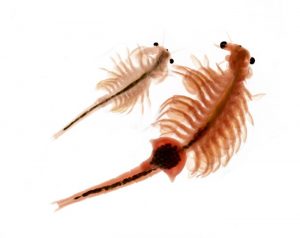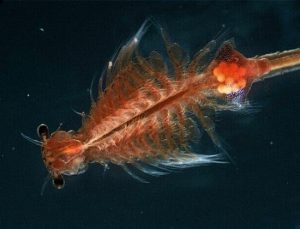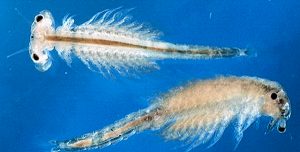 There has been an increase in Russia and indeed worldwide in the popularity of products that promote health and vitality. Scientists worldwide are committed to the search for unique natural ingredients that will people supplement nutrients missing from their modern diets, thanks to the nutritional riches of natural resources.
There has been an increase in Russia and indeed worldwide in the popularity of products that promote health and vitality. Scientists worldwide are committed to the search for unique natural ingredients that will people supplement nutrients missing from their modern diets, thanks to the nutritional riches of natural resources.
One of these unique discoveries was the branchiopod crustacean Artemia (Artemia sp.), that inhabits salt lakes. This is a wonderful creation of nature that has become known throughout the world not only because of its nutritional value, but also its way of reproduction and its survival skills in extreme conditions.
The first time the world heard about the crustacean Artemia was from biologist Carl Linnaeus, who became the founder of the modern classification of animals. It was Linnaeus who discovered crustacean species Artemia Salina in 1758, in its habitat that was a dried-up British lake, Lake Livingston. For that reason the Artemia Salina species was declared extinct.
 However, the nearest relatives of this amazing species exist in other natural water reservoirs worldwide, therefore in biology a common name was given for this type of crustacean – crustacean Artemia sp. (Crustacean Artemia).
However, the nearest relatives of this amazing species exist in other natural water reservoirs worldwide, therefore in biology a common name was given for this type of crustacean – crustacean Artemia sp. (Crustacean Artemia).
There are a total of seven species of Artemia sp worldwide.
How did crustacean Artemia sp. live before they became the famous inhabitant of Siberian salt lakes?
The history of Artemia sp. begins in the Cambrian period of the Paleozoic era. Marine life of those times was very different from today’s. Most of them have died, unable to withstand the competition and a sharp change of climate on the planet.
Crustaceans first appeared about 470 million years ago! These organisms have a significant advantage over the others: the ability to move across the seafloor and look for their own food.
Global cooling at the end of the Cambrian period, and then a few million years of warming – significantly changed the diversity of marine life and crustaceans beings as well. The number of species living in the seas, decreased by 4 times.
Simultaneously with the cooling, there was a significant increase in the salinity of sea water, and during the warming of the world ocean levels rose. Global warming at the beginning of the Mesozoic period, led to the reduction of sea surface areas and the extinction of numerous species.
But this test only reinforced the climate adaptation capabilities of the crustacean Artemia sp. The last 2 million years, this crustacean has continued to evolve and improve its odds of survival.
Artemia sp. log journey has always been inextricably linked with the human kind.
It is known that Artemia sp. in some cases served human as a source of food. For example, Native Americans who lived on the banks of the Great Salt Lake in Utah (USA), willingly ate these crustaceans. Arabs nomadic to the west of the Nile Delta, caught Artemia sp. in salt lakes and cooked them into a paste, which as recalled in the words of the famous German geographer August Petermann (1822-1878), reminded of salted herring, and they actively replaced consumption of meat with this paste.
Nowadays, Artemia sp. is mainly used as food for fish or the base for a healthy food, and within industrial fish farming, it is one of the most popular types.
For example, Artemia sp is used for breeding young sturgeons. The high calorie and biochemical composition of live crustacean Artemia sp. make them the best product for the feeding of sturgeon fingerlings.

Since the mid-1980s as a result of worldwide spread of commercial aquaculture (growing of algae, mollusks, crustaceans, etc.) annual consumption of Artemia sp. Eggs has increased to several hundred thousand tons. Several species of aquatic animals, the candidates for mariculture, have been put into practice in recent years thanks to Artemia. For example, the “explosive” development of aquaculture of euryhaline marine fish in the Mediterranean after 1970 was based mainly on the use of Artemia sp.
The development of products for improving people’s health using Artemia sp. began in the 2000s.
Over the last ten years extensive studies have been carried out into the properties of Artemia sp., greatly expanding its use in human activities.
BIO Building became one of the first manufacturers of health products for people’s consumption using crustacean Artemia sp.
“Artemia Gold” – is the result of years of research and patented egg processing technology and possesses an incredible reserve of unique and rare biologically active components: nucleic acids (DNA, RNA), iodine, protein, amino acids, trace elements, fatty acids, vitamins.
All these components perfectly compensate for the lack of vital nutrients in the human body and restore it after exercise and protect against the harmful effects of the environment.
